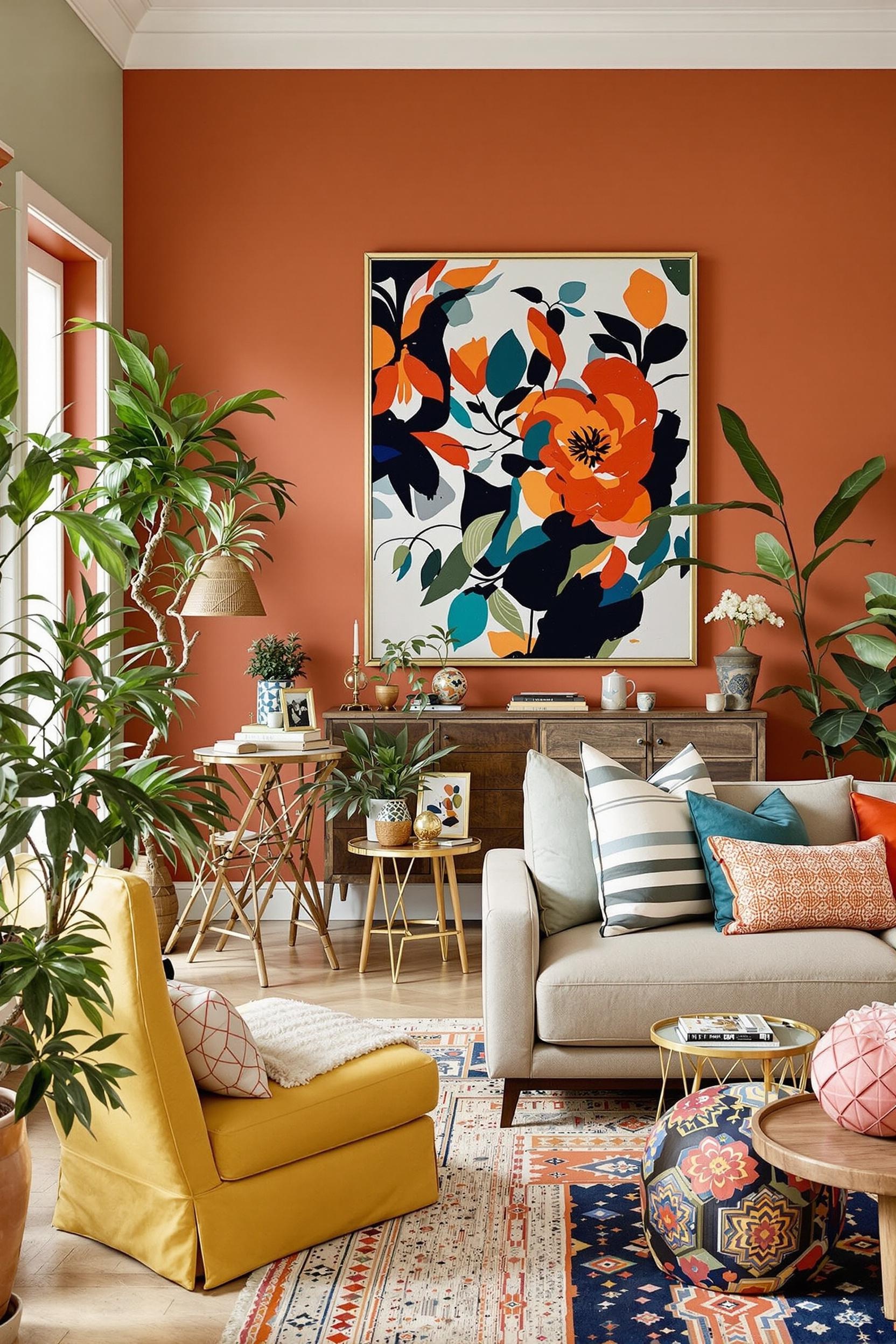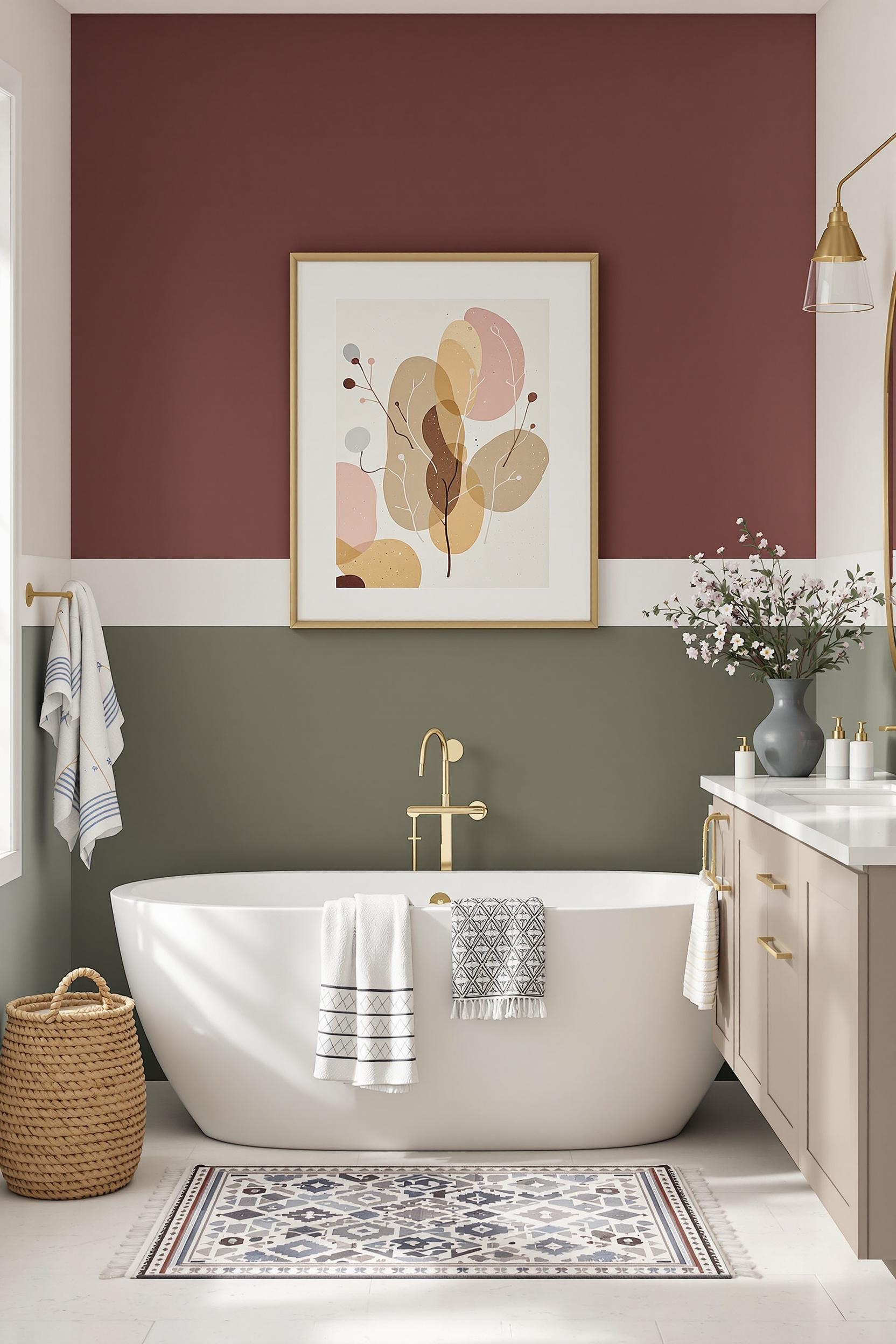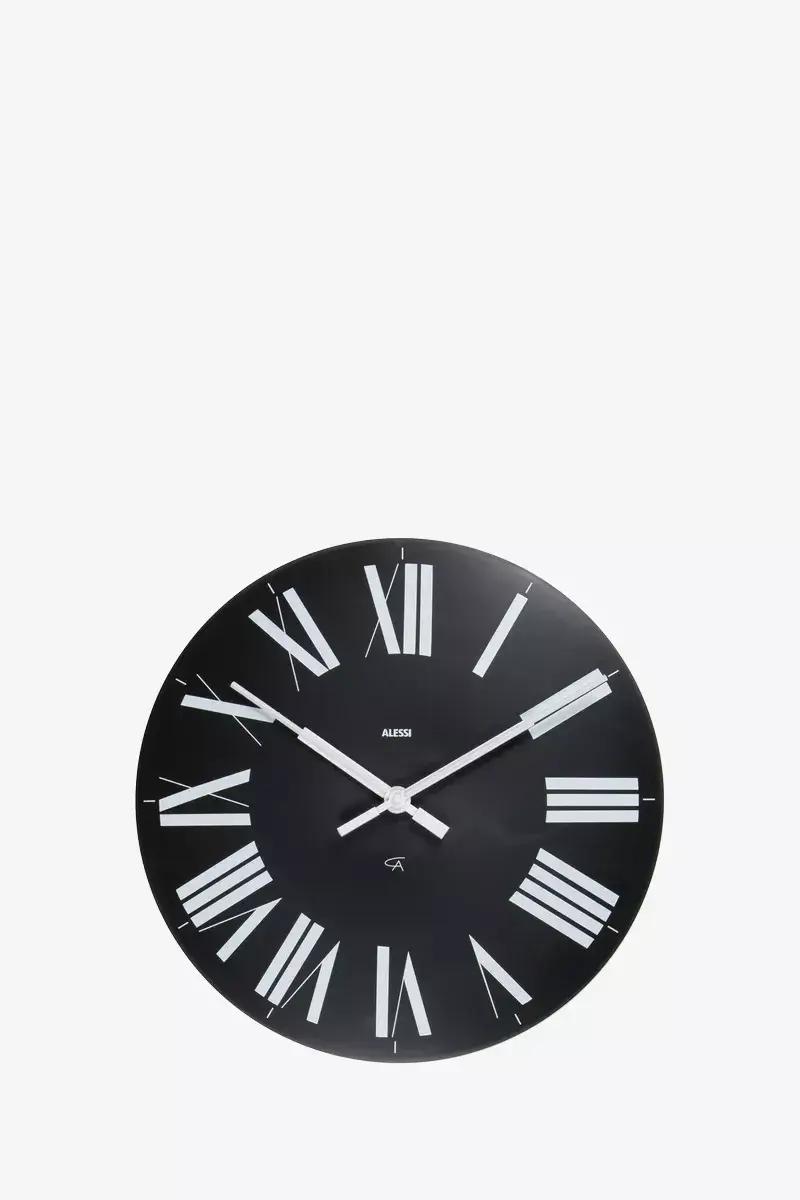
Zoning Open Plan Spaces with Paint: Master the Minimalist Color Block Revolution
Open-plan homes offer freedom and flow, but they can easily feel overwhelming or disorganized without clear areas for living, dining, and working. That’s where paint zoning comes in. Through strategic use of color blocking interior design, you can create beautiful, functional spaces without building walls.

In this guide, I’ll walk you through the best paint zoning for interiors techniques for open-concept layouts. Whether you live in a small apartment or a modern loft, you can turn those wide, undefined areas into purposeful spaces using nothing more than paint and creativity.
Why Use Paint to Zone Open Concept Spaces?
Using color blocking minimalist home techniques allows you to segment rooms visually. Instead of erecting partitions, you apply different paint hues or styles to define zones. According to Decorilla’s design experts, one of the most effective ways to define function in large spaces is through color transitions.
Think of a cozy reading corner in sage green or a dining nook accented with warm terracotta — these color stories guide the eye and the body naturally.
Research in environmental psychology supports this—it shows that color zoning for open plan homes reduces spatial confusion and increases functionality. This technique works particularly well in small apartments, where paint can divide space while keeping the layout airy and light.
Creative Ways to Zone Rooms with Paint
1. Vertical Color Blocks to Soften Boundaries
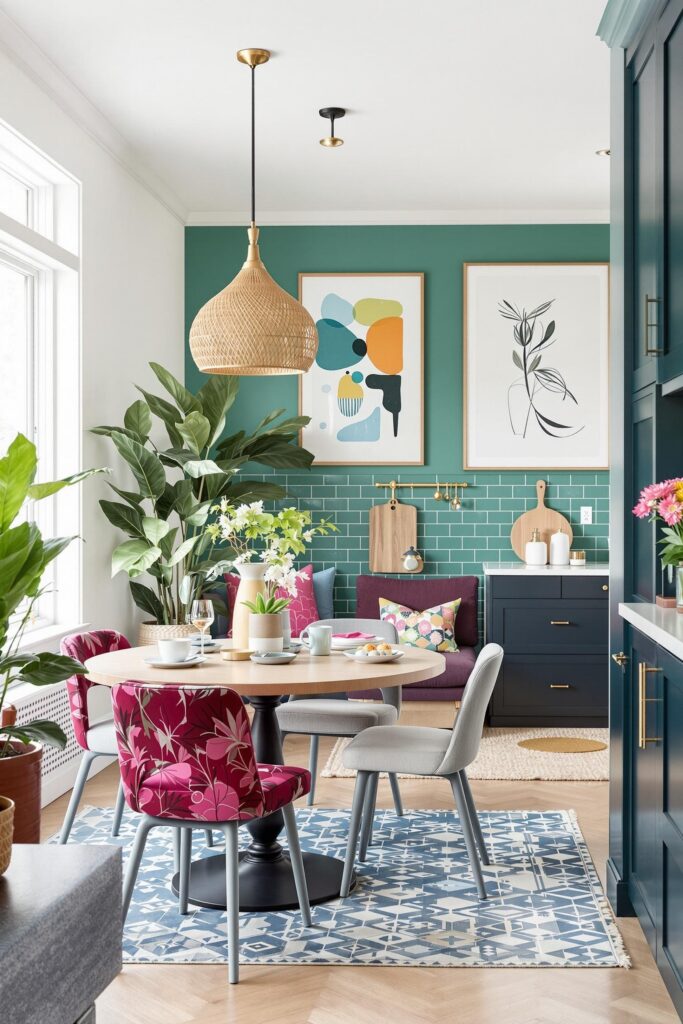
Vertical color blocks draw the eye upward. In tight spaces, this simple trick makes ceilings feel taller. I’ve used muted pastels like lavender and dusty rose to softly divide sleeping areas from living zones. This tone-on-tone method is subtle but effective.
2. Coordinated Geometric Paint Zoning
Geometric color blocking in interiors is perfect if you want a bold and modern look. Use angled lines or even arches to create eye-catching boundaries between functions like home offices and media rooms. When I want to energize a space, I’ll add a diagonal coral block next to a calming gray wall. The contrast defines and balances simultaneously.
3. Split Wall Color Zoning
Split wall designs work wonders in long, narrow rooms. I often paint the lower half of a wall with a strong color like navy or forest green, keeping the top half white. This method breaks up wall expanses and clearly separates seating areas from walkways. It also emphasizes furniture placement naturally.
4. Minimalist Color Block Accent Walls
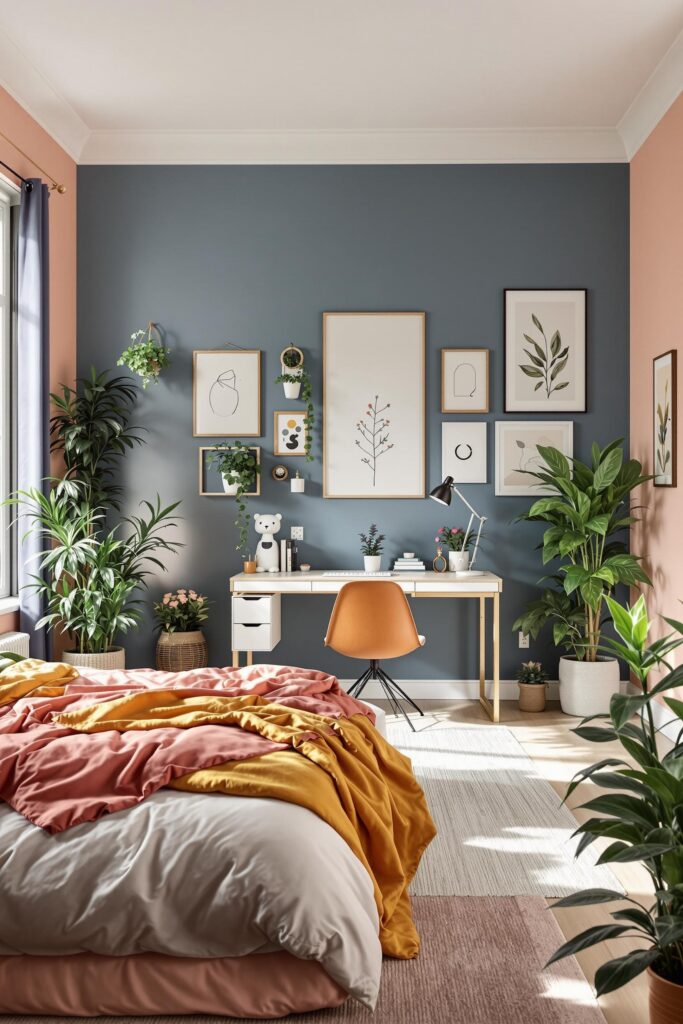
Not ready to go all in? Try a simple accent wall to zone out your dining area or entryway. Neutral-based palettes with just one or two accent color blocks create clear spatial definition while keeping things calm and minimalist. One of my favorite combos? Creamy white base with a triangle of sage green or terracotta.
How to Select the Right Paint Colors
Paint zoning techniques rely on carefully chosen color combinations. Here are my suggestions for selecting the best paint colors:
- Foundation Color: Use soft white, beige, or light gray to keep the room feeling open.
- Functional Accents: Pick 2–3 muted or bold shades to differentiate zones. Think deep navy for work, earthy green for calm zones, and burnt orange for vibrancy.
- Color Psychology Cues: Blues and greens support focus, while reds and oranges stimulate energy. Use this to your advantage when designing your kitchen, living room, or home office.
Strategically placed accent colors for zoning open layouts help create a story across the entire space. For example, carry your navy office block into an adjacent reading nook by using it in accessories or art.
Mastering DIY Color Blocking for Minimalist Homes
Color zoning may sound complex, but you don’t need to hire a contractor. It’s perfect for a DIY weekend project! I’ve helped many clients — and tackled it in my own home — by following these simple steps:
- Measure your open-plan layout to identify natural zones
- Select a neutral base and 2–3 coordinating colors
- Use painter’s tape to create clean lines
- Paint one section at a time, using angular brushes around edges
- Add in vertical, horizontal, or geometric shapes to customize
If you’re unsure where to begin, check out this step-by-step guide for DIY color block walls. It’s easier than you think!
Color Zoning in Action: Transform Any Room
I often use these paint zoning tactics across different rooms to blend beauty with functionality:
Living Room & Kitchen Combo
Define your living zone with a large warm beige block while contrasting it with muted green for the cooking area.
Open Loft Layout
Loft-style homes really benefit from this approach. Shape flow with overlapping hexagonal paint zones in subtle hues. Use muted blues and grays to create separation while maintaining cohesion.
Home Office Nook
Even a small workspace can be defined. I like to isolate desks zones using a strong color like navy or charcoal. The boundary instantly sparks organization and focus.
Tiny Studio Apartments
Vertical or diagonal blocks let you define “rooms” within one multifunctional space. Try combining deep greens with soft whites for a cozy yet breathable mix.
Color Zoning Revolution: Transform Your Home Today!
Unlock Your Design Potential: Practical Color Blocking Solutions
Color zoning is more than a trend — it’s about rethinking how spaces work and feel. If you want to transform your home using minimalist color block painting, here’s your toolkit:
- Low cost and renter-friendly
- No structural work required
- Adapts as your lifestyle evolves
- Aesthetic value meets high function
DIY Color Zoning: Your Step-by-Step Guide to Transformation
- Measure your space and sketch your layout
- Pick a base tone and three muted or bold complements
- Plan your color zones visually using painter’s tape
- Use verticals for height, diagonals for movement
- Focus on crisp transitions and clean edges
Your Design Transformation Starts Now
Why wait? Now’s the time to create a space tailored to how you live and feel every day. Let your home tell your story — all through a few strategic strokes of color.
Unlock Your Design Potential – Join Now!
Color Zoning FAQs: Your Ultimate Guide to Transforming Open-Plan Spaces
Q1: How effective is color zoning for defining spaces in an open-plan layout?
Very effective! Research cited in this article shows that strategic paint zones influence how people move and function. They create structure without adding walls.
Q2: Can color zoning work in small apartments?
Yes, it works even better! Try vertical blocks to raise ceiling height visually or neutral foundations with contrasting zones for clarity.
Q3: What paint colors are best for minimalist homes?
Base colors: light gray, white, soft beige. Accent blocks: pastel tones or bolder muted shades like navy, sage, and terracotta.
Q4: Can I do this project myself?
Absolutely! Follow these instructions or dive into a weekend DIY paint project. You’ll need painter’s tape, a roller, and patience.
Q5: How often should I change my color blocks?
Most people keep them 2–3 years. You can refresh as your taste changes without huge effort. Color zoning keeps your space flexible and modern.
Subscribe for More Inspiration
Want more tips on color blocking interior design, DIY color zoning, and styling open rooms with paint? Join my newsletter below:
Subscribe for More Design Tips
Your dream home is only a few brushstrokes away. Let your walls do the talking — strategically, stylishly, and beautifully.

